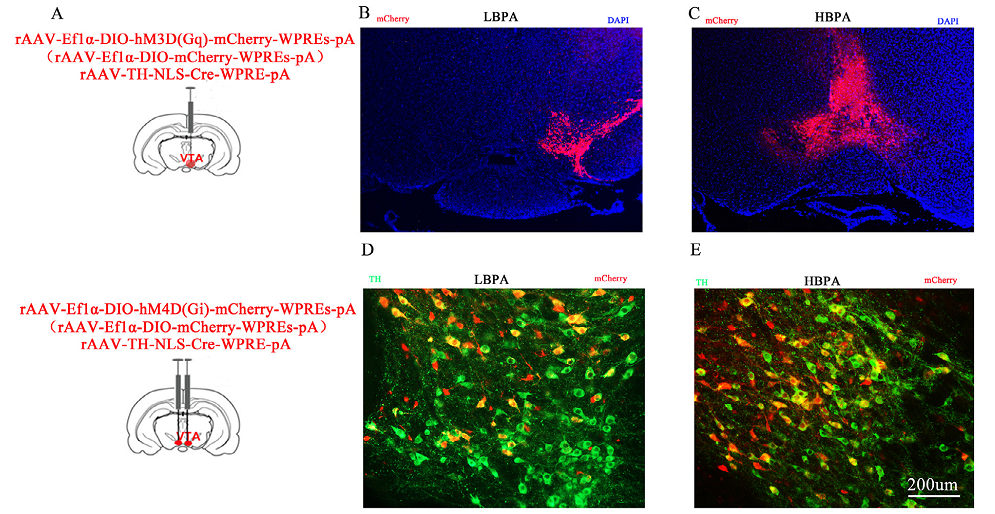AAV-hM4D(Gi) and AAV-hM3D (Gq) were used for chemogenetic activation or inhibition of TH neurons. (From
BrainVTA)
The viruses used in this article from BrainVTA are in the table below
|
Chemogenetics |
PT-0043 rAAV-Ef1α-DIO-hM4D(Gi)-mCherry
PT-0042 rAAV-Ef1α-DIO-hM3D (Gq)-mCherry |
|
CRE Recombinase |
PT-0179 rAAV-TH-NLS-Cre |
|
Control |
PT-0013 rAAV-Ef1α-DIO-mCherry |
Jing Zhang, Zhi-Xiong He, Yi-Shan Qu, Lai-Fu Li, Li-Min Wang, Wei Yuan, Wen-Juan Hou, Ying-Qi Zhu, Wen-Qi Cai, Xue-Ni Zhang, Qian-Qian Guo, Shu-Cheng An, Rui Jia, Fa-Dao Tai
Pub Date: 2021-03-14,
DOI: 10.1016/j.euroneuro.2021.02.011,
Email: sales@brainvta.com
Physical inactivity, the fourth leading mortality risk factor worldwide, is associated with chronic mental illness. Identifying the mechanisms underlying different levels of baseline physical activity and the effects of these levels on the susceptibility to stress is very important. However, whether different levels of baseline physical activity influence the susceptibility and resilience to chronic social defeat stress (CSDS), and the underlying mechanisms in the brain remain unclear. The present study segregated wild-type mice into low baseline physical activity (LBPA) and high baseline physical activity (HBPA) groups based on short term voluntary wheel running (VWR). LBPA mice showed obvious susceptibility to CSDS, while HBPA mice were resilient to CSDS. In addition, the expression of tyrosine hydroxylase (TH) in the ventral tegmental area (VTA) was lower in LBPA mice than in HBPA mice. Furthermore, activation of TH neurons in the VTA of LBPA mice by chemogenetic methods increased the levels of VWR and resilience to CSDS. In contrast, inhibiting TH neurons in the VTA of HBPA mice lowered the levels of VWR and increased their susceptibility to CSDS. Thus, this study suggests that different baseline physical activities might be mediated by the dopamine system. This system also affects the susceptibility and resilience to CSDS, possibly via alteration of the baseline physical activity. This perspective on the neural control and impacts on VWR may aid the development of strategies to motivate and sustain voluntary physical activity. Furthermore, this can maximize the impacts of regular physical activity toward stress-reduction and health promotion.
 Figure 1. Virus expression was limited to TH-neurons in the VTA.
Figure 1. Virus expression was limited to TH-neurons in the VTA.
To identify the mechanisms underlying different levels of baseline physical activity and the effects of these levels on the susceptibility to stress, the authors test whether activation or inhibition of TH neurons in the VTA was associated with the baseline VWR behavior and susceptibility to CSDS. The results show different baseline physical activities might be mediated by the dopamine system. This system also affects the susceptibility and resilience to CSDS, possibly via alteration of the baseline physical activity.
BrainVTA offers viral vector construction & virus packaging services for AAV, LV, RABV, PRV, HSV and VSV that help researchers explore questions about genes, neurons, circuitry structure, function of brain network, mechanism and treatment of diseases.
If you have any needs, just email us at
sales@brainvta.com.
